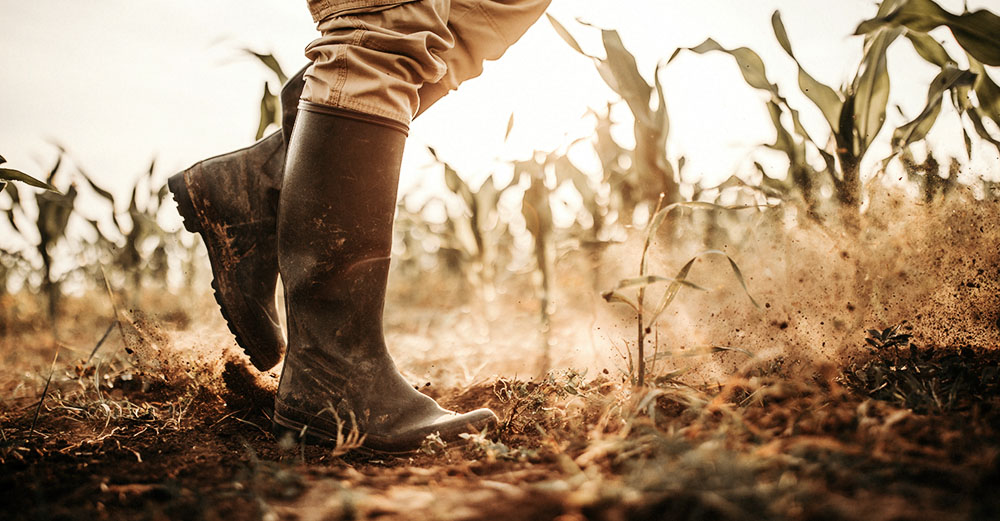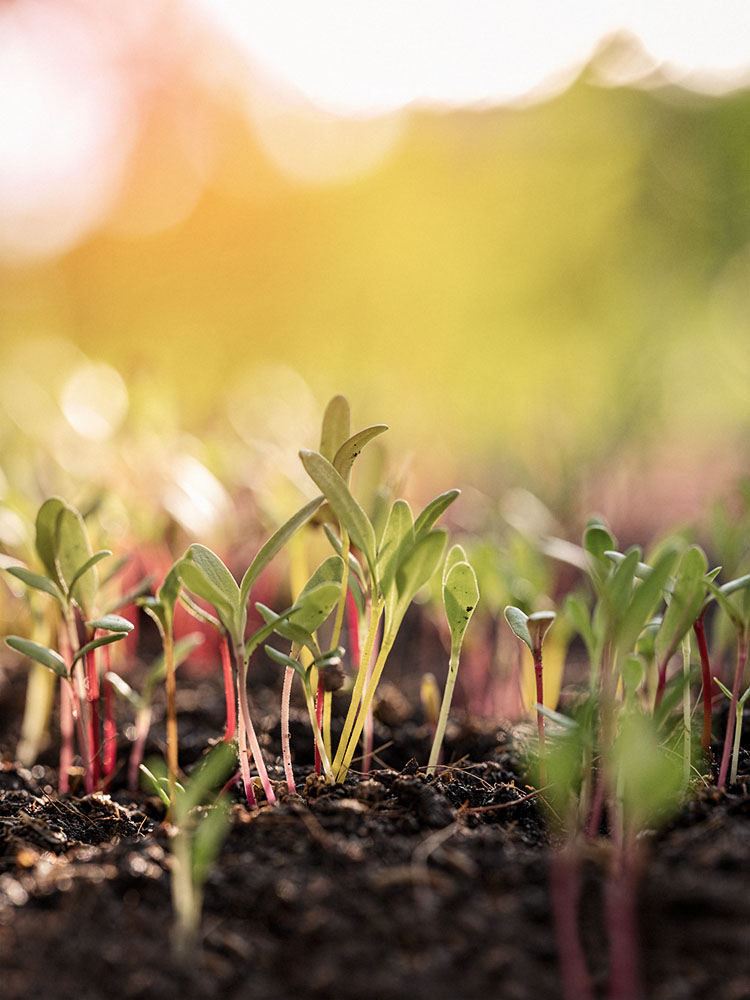
Back in 1851, nearly nine in 10 Canadians lived in rural areas. By 1921, more than 50 percent were still rural-dwellers, and agriculture was the most common occupation, accounting for one third of all jobs.
Since then, due to many technological advances and changes in the structure of our economy, the rural population has steadily declined. Today, four out of five of us are urbanites; less than 20 percent still live in the countryside. Less than two percent are now involved in jobs related to agriculture, and fewer than one percent are farm operators. And since most food production happens outside of metropolitan areas, the majority of us are not only physically separated from the origins of our meals, we’re also emotionally and intellectually disconnected from the roots of our sustenance.
As a farmer’s stepdaughter who grew up in a farming community, I’ll admit to a (former) feeling of exclusion from the crowd of disconnected eaters. Until recently, that is. A drive through the miles of banana plantations in rural Costa Rica jolted me to realize that I had never once, while holding one of the hundreds of bananas consumed in my lifetime, given so much as a fleeting thought to its origin. The production, the workers, the environmental impacts, let alone the journey to my local grocery store — until I witnessed a traffic jam of semi-trucks and enormous container ships waiting to be loaded with bananas at the Caribbean Port of Limón. And, of the pennies I pay for one piece of fruit, how much actually goes to the farmer? I hadn’t a clue.
Advances in technology, new seed varieties, pesticides and fertilizers have led to increased agricultural yields, and mean that we don’t all need to be out on the land (or seas) producing food as we once did.
As a result, under the current industrial system, relatively few of us are required to harvest enough food to feed many. Food has also become relatively cheap to buy. This year, Food Freedom Day was February 9. That’s the point in the annual calendar when, according to the Canadian Federation of Agriculture, a household of average income will have earned enough to pay their grocery bills for a whole year. Accounting for around just 10 percent of our disposable income, Canadians enjoy some of the least expensive food in the world. (By contrast, several African countries spend well over 40 percent of their disposable income on food.)
Now that we in developed countries aren’t all preoccupied with the task of producing food, many of us have found time to obsess over, tweet about and Instagram our dinner plates, and rave about superstar chefs and our favourite restaurants. But another side effect of this disconnect from the land is that we’re largely ignorant of the processes, the farming and farmers that actually produce the food for our plates. And, we’re largely unaware of our role in perpetuating the status quo of the prevailing food system (but one example: studies show that if you grow the food you eat, you’re less likely to waste it). And if we don’t know anything about our food system, how can we help fix what’s broken?
“Eating is an agricultural act,” said American farmer, activist and writer Wendell Berry in his essay “The Pleasures of Eating,” from his book of essays What Are People For?
Each bite is a vote of support, for the kind of food and food system you want. But if you’re not informed, how can you cast a wise ballot?
To care about something, you need to understand it. To understand it, you need to learn about it.
And why should you care and learn about the plight of Canadian ag and food producers? For one, they’re tending a huge portion of the land across our great nation, which affects the climate (a large percentage of greenhouse gas emissions come from agriculture) — as well as your health, via the nutritiousness of your food, and the quality of the air, soil and water that surround you.
Glyphosate is but one example; we’ve heard a lot about this herbicide recently in the news. When I was growing up, glyphosate (a.k.a., Roundup) was used to kill weeds in the fields, before seeding. These days, many don’t know that it’s also frequently used to kill mature wheat and lentil (pulse) plants just before harvest, so that rather than the traditional method of swathing (cutting) the crop first, farmers can simply straight-combine grains and pulses. This saves time and labour. And yes, some studies and regulatory bodies say glyphosate is safe in certain levels — but, even so, maybe you just don’t want any of it used on the food you eat. But before making that decision, first you’d have to know that it is being used at all, and the associated risks. And, if it turns out you’re not happy with the idea, you can then take action by choosing to buy organic instead of conventional grains or pulses.
Another little-known fact of factory food production is that the flour most of us eat today is stripped of all the good stuff — such as the germ and bran. It’s many times removed from the nutritious flour our great-grandparents ate. If you knew this, maybe you’d make an effort to seek out bread made with freshly milled, whole-grain organic flour, such as the loaves at Prairie Boy Bread in Toronto, or Wildfire Bakery in Victoria, BC. Or choose Grainstorm Heritage Baking pancake, muffin and cookie mixes available in Quebec and Ontario grocery stores, and also online.

If you’re not informed, how can you cast a wise ballot?
Without a connection to food production, it can be tough, if not impossible, to know all of this. So, how in a city can you gain a connection to the source of your food? The web, of course, is always a source of information if you want to sit down and research. But for something more tangible, visit an artisanal baker, and find out firsthand just why freshly milled flour is different, and where it comes from. In the Vancouver area, you could make a trip to the Bowen Island salmon hatchery to learn about the wild salmon on your dinner plate. Even a visit to an urban brewery, cider mill or meadery can help connect us with the story of the raw ingredients and processes that go into making some of our favourite beverages.
A farmers’ market is another place to gain knowledge and connection, but you can also seek out the smaller or hobby farms that surround some metropolitan areas. They often hold open farm weekends.
Following the learning that you, as a consumer, undertake, and the votes you cast with your food dollars and food choices, you may be relieved to hear that, on the other side of the fence, many farmers are paying attention.
“There’s quite a feeling among those of us in agriculture that we have to be more connected to the consumers,” says my stepfather, Gord Will, who is retiring this year after farming grain, pulse and oilseed crops for over 50 years in southern Saskatchewan. “We talk, and we hear more and more about that. Because ultimately the consumer is who we must listen to, rather than shutting our ears and saying they don’t know anything. There was a feeling for a while of ‘well, we grow the food, and that’s the end of the story.’ But if among consumers there was, for example, a market for other crops, such as those without chemical sprays, farmers would be pretty quick to respond,”
And he says the additional cost to the consumer, for example, for lentils and wheat that are swathed rather than sprayed, would be pennies.
“Farmers are very conscious of better markets. If there was a better market that paid more because of consumer demand, they’d jump on it pretty quick. Grass-fed beef is an example. Rather than being fattened on grain in feedlots, you have beef raised on grass. And that’s a niche market that has grown.”
